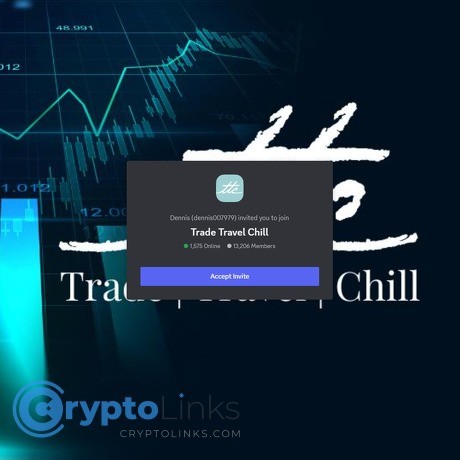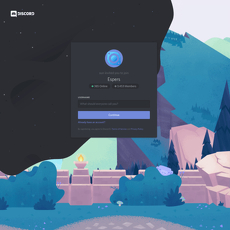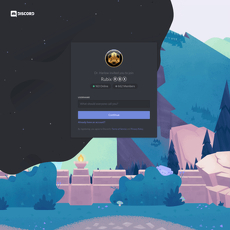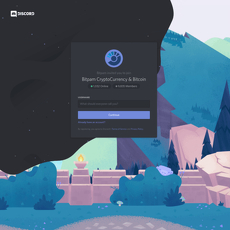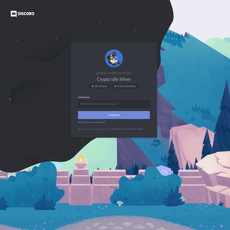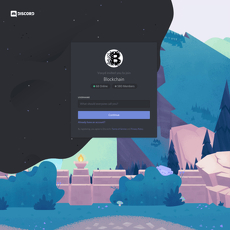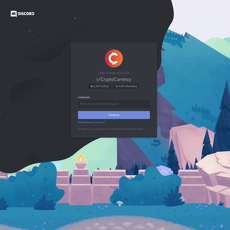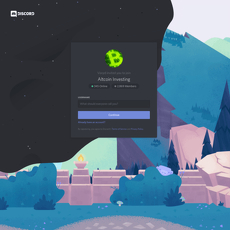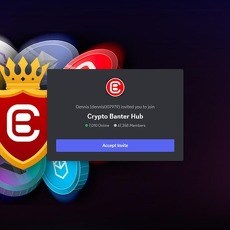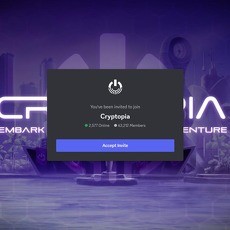Trade Travel Chill Review
Trade Travel Chill
discordapp.com
Trade Travel Chill Review & Guide: Everything You Need to Know + FAQ
Quick question: are you tired of crypto Discords that scream “alpha” all day but leave you with FOMO, spam, and zero confidence in your next trade?
If that hits home, you’re in the right place. I’m taking a close look at Trade Travel Chill—a crypto Discord that blends trading insights, travel-friendly lifestyle talk, and a community that’s supposed to be chill and practical. My goal is simple: help you decide fast if it’s worth your attention, and if you do join, how to use it smartly from day one.
The real problem with most crypto Discords
Let’s be honest about why so many people bounce off crypto servers:
- Noise > signal: endless charts without context, cherry-picked wins, and vague “send it” calls.
- No risk talk: entries with no invalidation, sizing guidance, or timeframe—so you’re gambling, not trading.
- Hype cycles: pings every five minutes, then crickets when the market cools. You’re left holding the bag.
- Scam exposure: fake mod DMs, airdrop lures, “bro, try this bot.” The FBI and consumer watchdogs report billions lost to investment scams each year, and crypto-themed versions are a big chunk of it. See the FBI IC3 report and Chainalysis Crypto Crime Reports for the big picture.
- Overwhelm kills clarity: context-switching and information overload tank decision quality. The APA’s research on multitasking shows how switching costs wreck performance—now add 30 noisy channels to that.
Quick reality check: if a Discord isn’t helping you make fewer, clearer decisions with better risk control, it’s draining your edge.
“Bought because three mods were bullish at once” isn’t a setup. A setup is level + reason + invalidation + plan.
Here’s how this guide will help
I’m going to keep it practical. You’ll get:
- Structure: how Trade Travel Chill is organized and where the useful stuff lives.
- Quality check: what the analysis looks like, how actionable it is, and how results are handled.
- Education focus: where beginners can learn cleanly and how intermediates can sharpen entries/exits.
- Safety and sanity: how to lock down DMs, filter notifications, and avoid the classic Discord traps.
- Fast-read pros/cons: zero fluff—what’s strong, what’s not, and who it suits.
- FAQ that actually matters: legit? beginner-friendly? futures or spot? noisy or not? refunds/trials if relevant?
I’ll also give you a simple way to test the server for yourself in a week without risking your bankroll or your time.
What you’re probably hoping to find (and what I’ll look for)
- Analysis with a spine: not just “BTC to 100k,” but “Reclaim/Reject levels, risk markers, timeframe, and invalidation.”
- Fewer but better ideas: a handful of clear setups beats 50 charts a day.
- Transparency: post-trade reviews or at least honest recaps—wins and losses.
- Healthy culture: helpful replies, clean moderation, no ego flexing over PnL screenshots.
- Extra value: travel/lifestyle discussions that actually help crypto users (flights, meetups, remote-work tips).
Example of “useful” vs “useless” you’ll see me call out:
- Useless: “SOL looking strong. Sending it soon.”
- Useful: “SOL HTF trend intact. Plan: reclaim above $X on 4H with volume → long to $Y. Invalid below $Z. Risk: 0.5–1R.”
Who should even consider joining a crypto Discord like this?
- Beginners who want clean structure, fewer channels, and risk-first teaching.
- Intermediates who want trade idea flow, feedback, and better entries/exits.
- Advanced traders who value a calm network and occasional second opinions without noise.
If you’re only after “signals” to copy without thinking, any server will disappoint you eventually. If you want skills + process, keep reading.
Quick setup checklist (preview)
We’ll go step-by-step later, but here’s the 60-second version so you don’t get spammed on day one:
- Join via this invite, accept rules, and complete verification.
- Lock DMs to “Friends only.” Scammers impersonate staff—everywhere.
- Set server notifications to “Only @mentions,” then enable alerts for just 2–3 key channels.
- Bookmark any “start-here,” “announcements,” “setups,” and “education” channels (names may vary).
Safety reminders you’ll want to keep
- No one legit will ask for your seed phrase, passwords, or remote access.
- Ignore unsolicited DMs—even if the profile looks like a mod. Confirm in public channels first.
- Beware “urgent” links and airdrops. When in doubt, don’t click.
- Use the platform tools: report suspicious users and read Discord Safety basics.
Cut the noise: notification filters that work
- Mute the server, then unmute only a few channels you care about.
- On mobile: turn off “push on every message.” Keep “Only @mentions.”
- Use Keyword Alerts for specific coins or topics (e.g., “BTC levels,” “ETH funding”).
- Schedule quiet hours so you don’t FOMO-chase during sleep or work blocks.
What to try first once you join (so you get value fast)
- Read the rules and any “how to use this server” post—this aligns expectations fast.
- Scan the latest market outlook, then pick one setup to track. Don’t chase five.
- Ask exactly one thoughtful question: coin, timeframe, level, and your thesis.
- Write down your plan before entering anything: entry, target, invalidation, size.
Do this for a week and you’ll know if the server pushes you toward better decisions—or just pings.
What I’ll cover next
Coming up, I’ll explain what Trade Travel Chill is actually about, the kind of traders it serves best, and how its content is balanced between market analysis, education, and travel/lifestyle threads. Curious whether it’s more “alpha group” or grounded community? Ready to see how it stacks up against the usual noise?
Let’s answer that next.
What is Trade Travel Chill? Quick overview and who it’s for
Trade Travel Chill is a focused Discord community built around three things that actually stick: smarter trades, a balanced lifestyle, and real connections. It blends market analysis and education with a traveler’s mindset—think crypto-first living, geo-hacks, and a supportive crew that values clarity over hype. If you want fewer “moon” emojis and more reasoning, you’ll feel at home.
Who gets the most from it?
- Beginners who want structure, guardrails, and clear next steps.
- Intermediate traders who need consistent idea flow, risk tips, and accountability.
- Advanced users who care about network quality, second opinions, and staying sharp without drowning in noise.
“Hype is a strategy for someone else’s liquidity. Clarity is a strategy for yours.”
Core purpose and vibe
The purpose here is simple: keep trading grounded in process, not adrenaline. Day to day, the server feels active without being chaotic. You’ll usually see a steady rhythm—morning market context, clean charts with invalidations, and thread-based discussions that don’t spiral into chaos. Mods are present, firm when needed, and more “coach” than “cop.”
Here’s the tone you can expect:
- Pragmatic and honest: “Here’s the plan, here’s the risk, here’s what invalidates it.”
- No flex culture: Wins are documented, losses are reviewed. You’ll see lessons, not just screenshots.
- Respectful feedback: New traders get concrete pointers, not sarcasm. Bad takes get corrected, not mocked.
Expect posts like: “BTC 4H range: plan is acceptance above midline or sweep of range low. Invalid if 4H closes below prior demand. Size small until confirmation.” It’s not a call to copy. It’s a template you can learn from.
Content pillars
- Market analysis: Clear bias notes and levels on BTC/ETH and majors. Occasional alts when the setup quality is actually there. Timeframes typically range from 1H to Daily, with macro context when it matters.
- Trade setups: Marked-up charts with entry triggers, invalidations, and partial take-profit logic. The goal is to teach you why, not just post “buys.”
- Education: Explainers on liquidity, funding, structure shifts, and risk math. You’ll find checklists and resources that make you slower—and better. Behavioral finance research consistently shows that routines and journaling reduce impulsive decisions, which is exactly the habit stack encouraged here.
- Risk and journaling: Templates for position sizing, pre-trade questions, and post-trade notes. This is where intermediate traders level up faster than they expect.
- Travel and lifestyle: Crypto-friendly bookings, residency/visa talk, on-the-road banking, co-working spots, and city threads. It’s not “travel porn”—it’s logistics for people who actually move.
- Community support: Structured Q&A threads and “sanity checks” before you press the button. Think friction that stops bad trades.
If you’ve ever opened a chart at 2 a.m. and wished for a clean second opinion, you’ll understand why this mix works. It’s part feedback loop, part safety net.
Who it’s really for (with real use-cases)
- Beginners: Start with the education threads and a simple routine—read daily market notes, pick one timeframe, practice risk templates. In 2–3 weeks, most newbies stop overtrading because the process forces patience.
- Intermediate traders: Use the setup channels as a “level filter.” If your idea looks nothing like what’s shared, you’ll know why you’re early or late. Pair this with journaling threads to refine entries/exits.
- Advanced traders: Treat it as a network and a speed bump. You’ll find peers who can stress test your thesis, plus macro watchlists that save time. The point isn’t to be “told” what to do—it’s to stay consistent.
What this server is NOT
- Not financial advice. Every chart is a learning resource, not a directive.
- Not a copy-trading room. You’ll see invalidations and context, not blind “buy/sell now.”
- Not a 24/7 signal factory. Quality > quantity. If the market’s choppy, expect restraint.
- Not a pump group. No “next 100x” spam, no DM pitches, no altcoin ambushes.
There’s a reason for this stance. Overtrading and FOMO are the two most expensive habits in crypto. Research in trading psychology keeps saying the same thing: defined routines and written rules reduce bad impulses. That’s the backbone here.
How it stacks up against typical “alpha” groups
- Less noise: Fewer pings, fewer dead-end calls. You’ll get context when it matters.
- More “why” than “what”: Posts explain structure, catalysts, and risk. You can reuse the logic on your own charts.
- Accountability culture: Expect post-trade reflection, not just cherry-picked wins.
- Lifestyle synergy: For crypto-first travelers, the community threads turn planning into play—practical tips from people who’ve actually done the route.
To keep it real, I’ll add this: sometimes the best thing you’ll see inside is an honest “no trade today.” That restraint is rare—and valuable.
If this sounds like the right mix, you’ll want to get your setup right from the start. Want the exact steps to join, lock down your privacy, and tune notifications so you only see what matters? I’ll walk you through it next—ready to make your first 10 minutes count?
How to join and set up your server experience (link, roles, safety)
I want you to enjoy Trade Travel Chill without drowning in pings or falling for nonsense. Set it up right once, and the server starts working for you—quiet when it should be, loud when it matters.
“Protect your attention like you protect your private keys.”
Here’s the clean, fast way to join and tune Trade Travel Chill so you get signal, not noise.
Onboarding checklist
- Join with the official invite: https://discord.gg/nGmUWF9c
- Log in or create a Discord account. Use a unique password. You’ll tighten security in a minute.
- Complete verification. Expect a captcha or verification bot. Follow the prompts—no downloads needed.
- Read and accept rules. Look for a “Rules” or “Start-Here” channel. Click the button/emoji to acknowledge. This unlocks channels.
- Lock down DMs (before you chat): Go to User Settings > Privacy & Safety > disable “Allow direct messages from server members.” You can always add friends later.
- Pick interest roles (if the server offers them): choose only what you’ll actually use. For example:
- Market focus: BTC, ETH, Alts, Spot, Futures
- Lifestyle: Travel talk, meetups, deals
- Updates: Announcements, events
Pro tip: fewer roles = fewer pings. You can add more anytime.
- Tune server notifications (2 minutes):
- Right-click the server icon > Notification Settings
- Set to Only @mentions
- Enable Suppress @everyone and @here
- Turn on Mobile Push Notifications only if you want alerts on the go
- Override key channels you care about: In Notification Settings > Notification Overrides, set high-signal channels like announcements or trade-ideas to All Messages. Keep general chat on mentions-only.
- Bookmark the good stuff: Open each main channel and click the pushpin to view Pinned Messages. Right-click standout posts > Copy Message Link and paste them into your Saved Messages for quick recall.
- Optional: add live sessions or AMAs to your calendar if the server posts schedules. If there’s a “events” channel, hit the “Interested” bell.
Why this matters: Research on digital interruptions (e.g., studies led by Prof. Gloria Mark) shows constant notifications wreck focus and can take ~20+ minutes to regain deep concentration. Good trading demands attention; your settings are your edge.
Safety and privacy basics
- Turn on 2FA: User Settings > My Account > Enable Two-Factor Auth. Use an authenticator app, not SMS if possible.
- Kill unwanted DMs: User Settings > Privacy & Safety > disable “Allow direct messages from server members.” Set friend requests to Friends of Friends or No One if you want zero cold approaches.
- Never share your seed phrase, private keys, or sign blind transactions. No staff will ask. No “giveaway,” “airdrop,” or “urgent support” needs your wallet secrets, ever.
- Watch for impersonators: Real staff have visible server roles. Click the profile and check their roles in the right panel. Scammers often DM first, rush you, and push “limited-time” links.
- Use official links only: Prefer links posted in announcements or pinned messages. If a DM sends you to a site, assume it’s fake until verified.
- Report and block fast:
- Suspicious DM: click the three dots > Report Spam & Block
- In-server issue: right-click message > Report, or tag a moderator in the channel if that’s allowed
- Use a hardware wallet for long-term funds. If you must test a link or tool, use a burner wallet with peanuts, not your main stack.
- Review connections: User Settings > Authorized Apps. Revoke anything you don’t recognize.
Heads up: Regulators and consumer protection agencies keep warning that social platforms are a top entry point for investment scams. A simple rule saves you: if it starts in DMs, it’s probably not legit.
Mobile vs desktop: notifications that respect your focus
Keep it consistent: quiet by default, loud only for must-see channels.
- Baseline server setting (both mobile & desktop): Only @mentions + Suppress @everyone/@here
- Overrides (high-signal channels only): Set announcements and your main analysis/trade-ideas channel to All Messages
- Mute on the fly: Long-press (mobile) or right-click (desktop) any noisy channel > Mute for 8 hours, 24 hours, or until you unmute
- iOS tip: Use Focus modes (e.g., “Markets”) and allow Discord notifications only from the channels you care about
- Android tip: Use per-channel notification categories in system settings to silence everything except the critical channels
- Desktop tip: Disable notification sounds for general chat. Keep a subtle sound for announcements so you notice without jumping
Keyword alerts for your watchlist
If you track a few coins or topics, let Discord notify you when they’re mentioned:
- User Settings > Notifications > Keyword Alerts (or “Add Keyword”)
- Add terms like BTC, ETH, SOL, breakout, funding, travel, or your favorite tickers
- Keep it tight—3 to 5 high-intent keywords is plenty. Too many and you’re back in noise land
Role selection that shapes your feed
Roles control what you see and who can ping you. Choose the minimum you need, then add more if you feel FOMO creeping in. My rule: if a role’s pings don’t help your next trade or next trip, skip it.
- Trader-first example: Spot, BTC, ETH, Alts, Announcements
- Futures-heavy example: BTC, Alts, Futures, Funding/News, Announcements
- Travel-first example: Travel, Meetups, Announcements; keep market roles minimal
Your first 15 minutes (copy this)
- Scan announcements to see important updates or scheduled events
- Open rules/start-here and check any server-specific instructions
- Visit market/ideas and hit the pushpin for Pinned Messages—that’s where the keepers live
- Set Notification Overrides for 2–3 critical channels; mute the rest for 24 hours
- Post a short intro if there’s an introductions channel: your timezone, what you trade, and your goals
- Create a note in Saved Messages titled “TTC Setup”—paste your key links and a mini-checklist (risk rules, position sizing, etc.)
Join here when you’re ready: https://discord.gg/nGmUWF9c. I’ll keep you honest: the next question is which channels actually deliver value and how their content flows day to day. Want the fast tour of what’s inside and where to focus first?
Channels and features: what you actually get inside
Here’s the honest tour of what you’ll actually use after joining. No fluff—just the rooms that shape your trading, your travel plans, and the conversations that keep you sharp when markets get choppy.
“Clarity beats urgency. The goal isn’t to catch every move—it’s to catch the right ones with calm.”
Market insights and trading ideas
Expect a clean split between big-picture reads and actionable setups. The flow tends to look like this:
- #market-talk: Fast reads on BTC/ETH, funding, OI shifts, and what’s moving today. Think catalysts and context.
- #charts-setups: Pre-planned trades with levels, timeframes, invalidations, and targets. Fewer posts, more signal.
- #alts-watch: Rotations, strength vs BTC, and relative momentum. Good for spotting narratives before CT catches up.
- #macro-feed: CPI/FOMC alerts, DXY, yields, and risk-on/off clues that actually affect crypto direction.
Idea quality skews toward repeatable process over lottery tickets. You’ll see timeframes labeled clearly—[15m] [1h] [4h] [D]—and a bias that can change if invalidation gets hit. That’s healthy.
Sample post format you’ll see (and should copy for your own journal):
- Pair: BTCUSDT [4H]
- Plan: Sweep 61.8k liquidity → reclaim → long to 64.5–65k
- Entry: 62.2–62.4k on reclaim
- Invalidation: 61.4k clean break/close
- Risk: 0.5R per attempt; max 1R for the idea
- Why: Confluence with 4H VWAP, prior weekly open, funding reset
Charts usually come annotated—levels, zones, and the “if this, then that” logic you can test. It’s meant to be reproducible, not hindsight art. You’ll spot people calling out funding/oi flips, weekend gaps, VWAP anchors, SFPs, and break/retests without turning it into a buzzword soup.
Education and skill growth
The education rooms feel like a toolkit you can keep returning to when your edge starts drifting.
- #learn-first: Core concepts—market structure, risk units, journaling, liquidity sweeps, and how to read a chart without forcing a bias.
- #entries-exits: Tight discussions on trigger types: SFP vs. break-retest, Fibonacci confluence, anchored VWAP, and how to avoid chasing.
- #risk-and-math: Position sizing, max daily drawdown, win-rate vs. R-multiple math, and why a 40% win rate can still crush if your average win is bigger than your average loss.
- #journals: Members post before/after screenshots, not just the winners. You’ll see honest R-results and what they’d change next time.
There’s a steady push to make you trade less and size smarter. The research backs this up: Barber and Odean (Journal of Finance, 2000) showed that overtrading typically hurts returns. You’ll see reminders to cap daily loss, avoid revenge trades, and set alerts so you wait for price to come to your level.
Checklists are a big theme. A simple pre-trade checklist massively reduces impulsive errors—Atul Gawande’s work on checklists (in medicine and aviation) popularized a principle that applies here: fewer decisions under stress, more consistent outcomes.
Community-led tips, live rooms, and lifestyle value
- #voice-lounge / live chart reviews: Screen-shares for real-time planning, Q&A on levels, and post-trade debriefs. You get to hear the reasoning behind the lines.
- #amas: Topic-focused sessions—risk, journaling, macro weeks—where you can ask the “dumb” question without getting roasted.
- #travel and #meetups: Crypto-friendly bookings (e.g., services like Travala), practical nomad tips (eSIMs like Airalo, airport lounge hacks), and city threads where members share safe co-working spots and Wi-Fi you can trust.
- #deals-chat: Occasional chatter on flight sales, hotel stacks, and when paying with crypto actually makes sense vs using a card with points.
This is where the “Chill” shows up: meetups pop up in major hubs, and there’s a bias toward helping you keep your coins safe while traveling—think hardware wallet hygiene and not connecting to random hotel Wi-Fi for hot wallets.
Tools and bots that matter
- Price and level alerts: Quick slash commands to set alerts on key levels so you’re not staring at charts all day.
- Funding/OI snapshots: Periodic updates that help you spot when perp positioning is stretched or resetting.
- Liquidation heatmaps: Visuals of where the pain pockets sit—useful for planning liquidity sweeps.
- Economic calendar pings: Heads-up for CPI, FOMC, jobs data—so you don’t open fresh risk five minutes before a volatility nuke.
- Thread indexers: Pin summaries so you can quickly find the best posts without scrolling forever.
Think of bots as signal boosters, not magic eight balls. They keep you honest about timing and context.
How to ask smart questions (and get real answers)
Good questions get crisp replies. Try this template:
- Pair/TF: SOL [1H]
- Context: Rejected daily supply; funding flipped positive
- Plan: Short on break/retest of 163.5 with 1H close
- Invalidation: 165.2 clean reclaim
- Stuck on: Unsure if this is a proper retest or just a wick
Attach a screenshot. Keep it to one clear question. You’ll get sharper feedback, faster.
A quick daily flow that actually works
- Check #announcements and macro pings for the day’s risk events.
- Scan #charts-setups and add two alerts max. If your level doesn’t hit, you don’t trade.
- Review #journals and steal one improvement for your next plan.
- Spend 10 minutes in #learn-first threads. One concept a day beats binge-learning once a month.
You’ll feel the difference in a week: less noise, more intention, fewer “how did I end up in this trade?” moments.
Wondering how the team keeps these rooms clean, handles spam, and pushes for transparent results without turning the place into a signals circus? That’s exactly what I’m tackling next—what “good” looks like and how they enforce it. Ready to see the quality bar?
Quality bar: moderation, transparency, and expectations
Real talk: the difference between a useful crypto Discord and a noisy one is the standard people are held to. In the Trade Travel Chill Discord, the quality bar is set around clarity, risk-first thinking, and accountability. That means fewer “moon soon” calls and more practical, timestamped ideas you can actually evaluate.
“Amateurs want to be right. Pros want to make money.”
Here’s how that shows up day to day and how to set your expectations so you get real value without falling into the copy-trade trap.
What “good” looks like here
Good posts feel like trade plans, not lottery tickets. They tend to include:
- Context first: timeframe, structure, and why now (not just where).
- Numbers that matter: entry zone, invalidation, targets, and risk sizing.
- Receipts: charts with timestamps or screenshots before the move, not victory laps after.
- Follow-through: quick recap once the idea plays out—win or lose.
Example of a high-standard idea you’ll see (format varies by poster, but quality is consistent):
- Pair/TF: BTCUSDT, 4H
- Bias: Short into prior high sweep
- Entry zone: 69,200–69,800
- Invalidation: 4H close above 70,600
- Targets: 67,400 → 66,000
- Thesis: Liquidity grab into HTF supply + funding reset
- Risk: 0.5% account; partials at 1R
- Heads-up: CPI Wed 08:30 ET; expect volatility
When trades conclude, the better contributors post concise recaps like: “Invalidated after CPI spike—lesson: time-based filter would have kept me out.” That sort of honest post-trade review is worth more than any green screenshot. Research backs this up—overconfidence and overtrading kill returns (Barber & Odean, 2000), and structured review reduces both.
Expect analysis over “signals.” You’ll still find clear levels and timing, but the culture pushes you to think in probabilities, not promises.
Managing expectations
Ground rules that’ll save you money and stress:
- No Discord can guarantee profits. If someone implies certainty, they’re selling you a feeling, not a plan. Regulators regularly warn about “signal scams” and fake track records—when in doubt, ask for the logic, not the hype (see the CFTC’s reminder on fraud awareness: cftc.gov).
- Ideas ≠ instructions. Use posts as hypothesis starters. Confirm with your own system before clicking buy/sell.
- Track your outcomes, not just theirs. Keep a simple sheet with date, pair, R-risked, R-result, reason you took it, and what you’d change next time. You’ll learn faster and avoid hindsight bias.
- Size small until you’re consistent. “A+ setups only” sounds great until you define what A+ means for you. Start with 0.25–0.5% per trade while you calibrate.
A quick template that works:
- Pre-trade: Why this setup? Where am I wrong? What is 1R in dollars?
- Post-trade: Outcome in R, screenshot, one sentence on what to keep/change.
Expectancy—the math behind your edge—comes from repetition and review, not one hero trade. That’s the mindset encouraged inside Trade Travel Chill.
Code of conduct that actually gets enforced
- No shill links, no seed requests, no “DM me for VIP.” Auto-mod and human mods nuke this fast.
- No PnL flex without context. If you post gains, show the idea and risk. It keeps the environment educational, not performative.
- Respectful debate. Disagree on charts, not on people. Personal attacks or harassment get timeouts or bans.
Why it matters: studies on group decision-making show noise and status signaling quickly crowd out useful info. A clean feed makes better trading behavior more likely.
Moderation workflow and response times
- Spam control: New accounts are watched closely; suspicious links get auto-held.
- Escalation: Use the report feature or open a ticket for mod eyes on a thread.
- Turnaround: During active market hours, I typically saw responses within minutes to a couple of hours; slower overnight depending on time zone.
It’s not a 24/7 concierge, but it’s active enough that problems rarely linger.
Staff accessibility and how to get feedback
- Tag the right roles when you want input on a setup; broad @everyone pings are discouraged.
- Thread your questions under the original chart so context isn’t lost.
- Office-hours style moments pop up around key market events or when a pattern is teaching-worthy; keep notifications smart so you catch those.
You won’t get hand-holding on every trade, but if you ask specific, effortful questions (“Here’s my 4H plan, invalidation, and entry—what am I missing?”), you’ll usually get a useful nudge.
How corrections and disagreements are handled
- Public corrections > silent edits. If a level was off or a thesis broke, the fix is posted in the open.
- Conflicting views are fine when both sides show their work. One trader can be short on 1H while another is long off the daily swing—timeframe mismatch, not drama.
- Post-mortems happen. You’ll see “what I got wrong” recaps after big moves. That humility sets the tone.
Transparency isn’t a spreadsheet with a perfect win rate. It’s a habit: show the reasoning, stamp it in time, and own the result. That’s the culture you’re walking into.
If that sounds healthy, you’re probably wondering one thing: do you need to pay to access the good stuff, or is the free side enough to level up? Let’s clear that up next and make sure you don’t overspend for features you won’t use.
Pricing, access, and value for money
If you’re trying to figure out whether Trade Travel Chill is worth your time (and possibly money), here’s how I think about it: cost is obvious, but value is time saved, clarity gained, and mistakes avoided. I care far more about the second part.
Most crypto Discords run one of three models: free-only, hybrid (free core + optional supporter tier), or fully gated. If you’re unsure which bucket this server sits in today, pop in, scan the welcome and announcements channels, and you’ll know within a minute. Either way, the same value calculus applies.
What people usually ask before joining (straight answers)
- Is it legit? I look for clean moderation, no “DM me for guaranteed gains” nonsense, trade ideas with reasoning (not just emojis), and a visible code of conduct. If those are present, that’s a green flag.
- Is there a free tier? Many quality servers keep market talk, education, and announcements free, with optional add-ons for advanced breakdowns. If there’s a paid tier here, expect it to revolve around deeper analysis or priority access—check the “start-here” or “info” channel for specifics.
- What do paid tiers usually include? Common perks: long-form market outlooks, intraday updates, recorded sessions, AMAs, or special tools/indicators. Don’t pay for vague “alpha.” Pay for structure and repeatable process.
- Are results verified? Unless there’s a public tracker with entry/exit, timestamps, and post-trade reviews, assume they’re not “verified.” Screenshots alone aren’t proof. Look for recap threads and clear invalidation levels.
- Beginner-friendly? If there are pinned glossaries, education channels, and patient replies to “basic” questions, it’s beginner-friendly. You’ll learn faster in communities that explain the why behind entries.
- Spot, futures, or both? Most active trader communities cover both. Spot ideas tend to be higher tolerance for beginners; futures discussions should include risk parameters like max drawdown and invalidation.
- How noisy is it? Check how often channels post and whether analysis comes with timeframes and outcomes. Noise is low when posts follow a template (thesis, levels, invalidation, results).
- Refunds? If there’s a paid tier, read the refund policy before joining. Many communities operate “no refunds” on digital access but sometimes offer short trials or monthly plans so you’re not locked in.
- Can US users join? Usually yes. If derivatives are discussed, it’s typically “education only.” You’re responsible for complying with your local rules.
- Trial? Some servers do 3–7 day trials. If not, look for monthly pricing instead of annual so you can test value without commitment.
My quick take on value
Here’s my personal scoring lens for communities like this:
- Clarity: Are ideas specific? Do they include levels and invalidation? If I can screenshot a post and trade it later without live hand-holding, that’s valuable.
- Consistency: Are updates regular across market cycles, not just when price goes up? I want “boring consistency” over “hot streaks.”
- Responsiveness: Do mods answer real questions without snark? Can you get a nudge on risk sizing or execution timing when you ask well?
- Education quality: Are concepts reusable? If a post teaches me a setup I can apply 100 times, that beats one great call.
- Community health: Mature tone, no win-flexing without context, and acceptance of losses. That last one is huge.
One reason I value education over signals: research in behavioral finance consistently shows that frequent traders underperform due to overconfidence and over-activity (Barber & Odean, 2000). Regulators also note most retail derivative traders lose money. Translation: following “hot tips” isn’t a strategy. A server that slows you down, tightens your process, and helps you avoid bad trades can be worth far more than its price tag.
Rule of thumb I use: If a community helps me avoid just one impulsive loss per month, it likely paid for itself—no heroic wins needed.
Tips to test value fast
Give yourself a structured trial window and measure outcomes. Here’s a simple plan:
- Day 1: Read the rules and any “start-here” posts. Mute channels you don’t need. Set alerts for only two or three channels where the highest-quality analysis lives.
- Day 2–3: Choose two ideas to track (spot or futures). Write down the thesis, levels, invalidation, and what would make you exit early. Even if you don’t take the trade, track the result.
- Day 4: Ask one quality question. Example: “For this BTC 4H setup, would you invalidate on a close below X or a wick below X? What’s the expected hold time if it plays out?” Measure the clarity of the reply.
- Day 5–6: Review any education threads or quick guides. Try to rephrase one lesson in your own words and apply it to a chart you trade.
- Day 7: Score the week. Did you get one repeatable concept? Did your noise drop? Did you avoid at least one bad trade? If yes, you’re getting value. If not, adjust your channel filters or reconsider fit.
Track your mini-trial in a simple spreadsheet or Notion page. Columns I use: ticker, timeframe, thesis snapshot, entry plan, invalidation, result, and “lesson.” You’ll know quickly whether the community is sharpening your edge.
What to pay attention to if there’s a paid tier:
- Specific deliverables: “Weekly outlook on majors, intraday BTC updates, monthly AMA” is good. “Exclusive alpha” is not a deliverable.
- Post-trade reviews: Wins and losses, both documented. Losers that are analyzed without ego are gold.
- Cancel-anytime terms: If you’re testing fit, monthly beats annual. Free trials or low-cost trials are a plus.
- Time-to-value: If it takes more than 10–20 minutes a day to capture value, it might be too noisy for most people.
One last mindset check: communities don’t replace your plan—they refine it. Studies on copy-trading and high-frequency retail activity show the crowd often chases heat and underperforms. Use the server to tighten entries, define invalidations, and control risk. If all you get is two fewer impulsive trades this month, that could be your biggest win.
Curious which questions to ask next, what alternatives compare well, and how to tailor the server to your style without getting overwhelmed? That’s exactly what I’m covering next—ready for a fast FAQ and smart comparisons before you commit?
FAQ, alternatives, and how to get the most out of Trade Travel Chill
Fast FAQ
How do I join?
Use the invite: https://discord.gg/nGmUWF9c. Accept the rules, pick your roles, and set notifications to Mentions Only so you don’t get pinged every five minutes.
What do I actually get inside?
Market talk, chart ideas, education threads, and a friendly lifestyle angle (travel, meetups, tips). Think structured analysis and community-backed learning—not “get rich quick” call spam.
Is it safe?
It’s as safe as your settings. Turn off DMs from non-friends, don’t click random links, and never share seed phrases or grant remote access. If someone claims to be staff and DMs you first, assume it’s a scam until verified in a public channel.
Is this signals or analysis?
Expect analysis first. When trade ideas appear, they usually come with context (levels, invalidations, risk notes). Use them as a starting point, not a copy-trade. Your sizing and timing will always be different from the poster’s.
How do mods handle spam and low-effort shills?
Mods remove obvious shills and DM scammers when reported. Use the server’s report process (often a “mod-mail,” “support,” or “tickets” channel). If you’re unsure, ask in a public room how to report properly.
Refunds or cancellation?
If there’s a paid tier, refunds/cancellations depend on the platform used (Discord Subscriptions, Patreon, Stripe, etc.). Always read the pinned terms in the announcements or billing channel before paying. If you can’t find them, ask a mod in-channel for the exact policy.
Are results verified?
Look for repeatable transparency: timestamped posts, before/after charts, and post-trade reviews—wins and losses. Treat single screenshots with skepticism. You can politely ask posters to link the original chart or outline what changed, then compare with price action on TradingView’s replay.
Beginner-friendly?
Yes, if you stick to the education threads and risk tips first. New traders tend to chase; don’t do that. Try one setup type (e.g., SR flips on the 4H) for two weeks and journal your outcomes.
Spot, futures, or both?
Both conversations appear. If you only trade spot, mute futures channels and filter your alerts. Futures traders should still track spot levels—they anchor most moves.
US users?
You can join the Discord. For trading execution, follow your local laws and exchange restrictions. The server is for information; you choose where and how you trade.
How do I verify what’s real?
- Check post history: Do they show losers?
- Ask for levels and invalidations, not just entries.
- Cross-check timestamps with TradingView’s replay.
- Log the idea yourself and see if it matched your plan.
Pro tip: Keep your DMs closed. If it’s important, it’ll happen in public channels or official tickets.
Alternatives worth comparing (and when they make sense)
Education-first communities: Best if you’re building fundamentals and want repeatable processes. Look for weekly TA clinics, archived lessons, and homework-style exercises. You’ll progress slower at first, but your decision-making improves fast.
Pure signals groups: Useful if you already have a risk framework and just want ideas to screen. Demand transparency: clear invalidations, timestamped calls, drawdown reporting, and a public record of closed trades. If they hide losses or refuse a trial/preview, walk away.
Research-first communities: Ideal if you swing trade or invest. Expect tokenomics breakdowns, on-chain dashboards, funding/open interest analysis, and macro notes. Slower pace, deeper conviction, fewer trades.
Travel/lifestyle-focused crypto groups: If the “work from anywhere” angle matters, look for servers that organize meetups, co-work sprints, and city-specific threads (SIM cards, airport lounges, crypto-friendly merchants). Just remember: lifestyle shouldn’t distract you from risk control.
If you want a broader menu to browse, check curated lists of crypto Discords on trusted directories. Compare moderation quality, education depth, and how they present results before committing time or money.
Make Trade Travel Chill work for you (quick system)
- Set alerts that matter: Add server-specific keyword notifications like “setup,” “invalidated,” “4H,” your favorite tickers, and “macro.” Research from the University of California, Irvine, shows interruptions can take ~23 minutes to recover from—so be ruthless with noise.
- Use a simple journal: For each idea you act on, write: “Why this trade? Where am I wrong? Max risk? Exit plan?” Performance coaches like Dr. Brett Steenbarger emphasize journaling for pattern recognition and self-regulation. It works.
- Focus on one pattern for 7–14 days: For example, trade only SR flips or only trend retests on the 1H–4H. Tracking one setup type beats grazing from 10 ideas.
- Always tag risk: Put your stop, invalidation, and position size in the same note. If you can’t write them down, you’re guessing.
- Review weekly in 15 minutes: What helped? What hurt? Did you follow your plan? Keep or cut channels and alerts based on this review.
“Consistency beats intensity.” One well-executed setup a week outperforms five impulsive trades every time.
If it isn’t the right fit
- Too fast? Mute fast-chat channels and stick to education and swing-idea threads.
- Too quiet? Ask one high-quality question with a chart. Good communities respond to effort.
- Not your style? Try an education-first or research-first server for a month. Keep the one that measurably improves your notes and risk discipline.
Bottom line
Join via the invite, set smart notifications, and give yourself a 14-day test window. Track two or three ideas end-to-end, ask one solid question, and review your journal at the end. If your entries, invalidations, and patience get better, keep it. If not, you’ll know fast—and that clarity is still a win.

